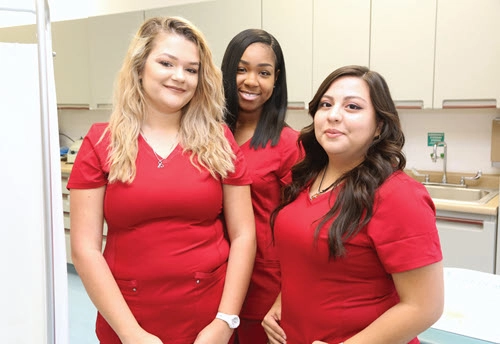This staffing trick may surprise you, but studies suggest the positive effects are real.
Some nursing homes fared better than others during the initial and subsequent COVD-19 surges. One study, looking at facilities across New York State, may have uncovered the reason: Nursing homes with unionized staff had lower incidence of COVID-19 infections than similar facilities whose staff were not unionized.
“The presence of a health care worker labor union was associated with a 30 percent relative decrease in COVID-19 mortality rate compared with facilities without unions in New York State,” say researchers Adam Dean, PhD, an assistant professor of political science at George Washington University, in Washington, D.C.; Atheendar Venkataramani, MD, PhD, an assistant professor in the Division of Health Policy, Perelman School of Medicine, University of Pennsylvania, in Philadelphia; and Simeon Kimmel, MA, MD, an assistant professor in the School of Medicine at Boston University and Boston Medical Center, in Boston. Their study, titled “Mortality Rates From COVID-19 Are Lower In Unionized Nursing Homes” and published in the Sept. 10, 2020 issue of Health Affairs, focuses on how unionization impacted COVID rates during one of the peak periods of the pandemic.

Why Labor Unions Made a Difference
New York was one of the hardest hit states at the beginning of the pandemic, when there were many questions and little understanding of how the SARs-CoV-2 virus was transmitted and how to keep especially vulnerable people safe. The lack of personal protective equipment (PPE) was a particularly dangerous problem for healthcare workers, and many nursing home staff across the country found it especially difficult to access sufficient, quality PPE to do their jobs safely.
Nursing homes with staff who were part of labor unions were able to lobby for the PPE they needed sooner and more successfully, the authors suggest. Ultimately, this kind of preparedness and protection for staff helped shield everyone.
“In regression analyses, we found that the presence of a labor union was associated with an 11.5-percentage-point increase … in the probability of a facility having access to N95 respirators and a 6.7-percentage-point increase … in the probability of having access to eye shields. Unions were therefore associated with a 13.8 percent relative increase in access to N95 respirators and a 7.3 percent relative increase in access to eye shields. Labor union status was not a significant predictor of access to other types of PPE,” the authors say.
In summer 2020, the Federal Emergency Management Agency (FEMA) sent faulty PPE to nursing homes. Andrew Jacobs, reporting for the New York Times, said in July 2020 that the faulty PPE included “… loose gloves of unknown provenance stuffed into unmarked Ziploc bags, surgical masks crafted from underwear fabric and plastic isolation gowns without openings for hands that require users to punch their fists through the closed sleeves.”
For more reporting on the faulty FEMA PPE, see https://www.nytimes.com/2020/07/24/health/coronavirus-nursing-homes-PPE.html.
Nursing home staff who had access to N95 respirators and eye shields were better equipped to avoid the aerosols that spread SARS-CoV-2.
“As more than 40 percent of all COVID-19 deaths have occurred in nursing homes, there is an urgent need to understand the factors that protect residents and staff. Amid the COVID-19 pandemic, unions advocated for supplies and policies that protect staff and residents from SARS-CoV-2 infection. Although our study design precluded causal interpretations, our results suggest that unions may have reduced COVID-19 deaths among nursing home residents by successfully demanding PPE for health care workers,” the authors say.
“In regression analyses, we found that the presence of a labor union representing health care workers was associated with a 1.29-percentage-point reduction in the proportion of facility residents who died from COVID-19,” the authors say.

Unions Correlate With Better Outcomes All Around, Study Suggests
“Our finding that unions are associated with reduced COVID-19 mortality rates in nursing homes is consistent with previous findings that unions improve safety and health standards for workers, help co-enforce those standards with employers, and also reduce workplace injuries and accidental deaths. Health care worker unions, in particular, are also associated with improved patient outcomes,” the authors say.
Of course, other factors were and remain at play as well.
“Certified nursing assistant staffing ratios were associated with lower COVID-19 mortality rates, while the average age of residents and the percentage of facility residents who were white were both associated with higher COVID-19 mortality rates. However, this finding regarding race was not statistically significant when we included region-level fixed effects,” the authors say. They noted that data regarding race and ethnicity for nursing home residents who died of COVID-19 was missing, and so they could not evaluate how racial disparities may have made an impact.
One other finding: Chain nursing homes were associated with higher mortality rates from COVID-19. The authors note that other studies by other people have suggested that chain nursing homes provide lower quality care.
“… to our knowledge, this study was the first to demonstrate that labor unions were associated with reduced COVID-19 infections and deaths in an essential industry. Lack of data on COVID-19 infections by occupation has thus far hindered research on whether unions can protect workers and the public,” the authors say.
Read more about the authors’ findings and the steps they took to make certain of their data here, http://www.healthaffairs.org/doi/10.1377/hlthaff.2020.01011.
